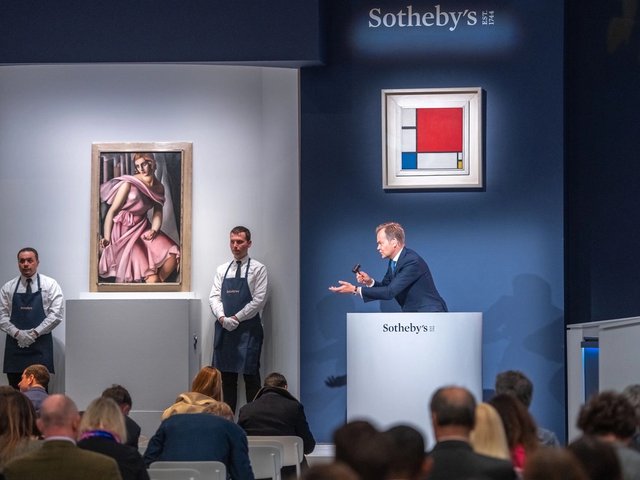Great private collections of antiquities are a rarity, and such is the thirst for even the youngest of provenances for items in this field, that the brief sojourn of a piece in the hands of an established connoisseur suffices to give this credential.
On 9 December, Sotheby’s sold the collection of Christos S. Bastis, who died in 1998 aged ninety-five, for a stunning $9,248,742 (est. $4.1 -6.5 million). “It’s one of the finest collections I’ve seen in twenty years,” says Richard M. Keresey, Sotheby’s specialist in charge of the sale. Bastis, who owned the Manhattan restaurant, Sea Fare of the Aegean, began collecting in the early 1940s. He supported the Metropolitan and Brooklyn Museums with money and gifts, as well as the Benaki Museum and Nicholas P. Goulandris Foundation in Athens. His collection was exhibited at the Met in 1988 and published with an introduction by the celebrated Met scholar, Dietrich von Bothmer. This was a collection, therefore, that satisfied all the criteria for a successful sale.
Conducted by Diana Brooks, Sotheby’s CEO, the auction was standing room only and virtually every major New York and London dealer was in attendance. More than a dozen fine art institutions were also bidding, with US, European, Japanese and Venezuelan private collectors also participating. Private collectors were the most prominent bidders on the highest lots of the evening. In the end, Americans purchased nine of the ten top objects.
The first lot of the evening, a diminutive bronze face of Osiris, 1075-732 BC (est. $8,000-12,000) soared to $79,500 and set the tone for the evening. Very few lots went under their low estimates and only three lots were bought in. Lot 11, a polychrome sandstone head of King Amenhotep, 1514-1493 BC (est. $800,000-1.2 million) struck $1,157,500, purchased by a US dealer. A US private collector bought both a green schist head of the goddess Selket, 570-526 BC (est. $125,000-175,000) for $580,000, as well as a black basalt head of a man (shown here) 550-500 BC (est. $100,000-150,000) for $772,500. Early bronze age pieces such as a Cycladic marble spouted bowl, 2600-2200 BC (est. $25,000-35,000) were favoured. It sold for $79,500. Also in strong demand were Greek black figure vases.
An American woman, who would only describe herself as a New Yorker with a Connecticut country house and owning a substantial collection, paid $321,500 for a bronze figure of a goddess, late Hellenistic or early Roman Imperial, first century BC/first century AD.
On the following day, Sotheby’s antiquities sale (est. $2.4-3.6 million) totalled a hefty $4,147,914. Once again, private collectors dominated, this time taking seven of the ten top lots. A Roman Imperial marble head of the Capitoline Aphrodite, first century BC/first century AD, bore the highest estimate, $200,000-300,000, that the auction house had ever put on a head, and dealers and private collectors battled fiercely for it. Bidding by telephone, a US private collector snapped it up for $662,500. All areas of antiquities were prized, from a Greek bronze helmet to a Sabaean alabaster stele from southern Arabia.
On 8 and 9 December, Christie’s antiquities and antique jewellery sales achieved just under $3.4 million (est. $3.1-4.1 million), or the highest total so far for the New York department. Of the ten top items, only three were purchased by private collectors. New York and European dealers, a US and a European museum bought the rest. The top lot was a Roman marble head of a goddess (est. $50,000-80,000) which made $244,500 and was captured by a private collector.
Originally appeared in The Art Newspaper as ‘Strongest sales to date for both houses'


